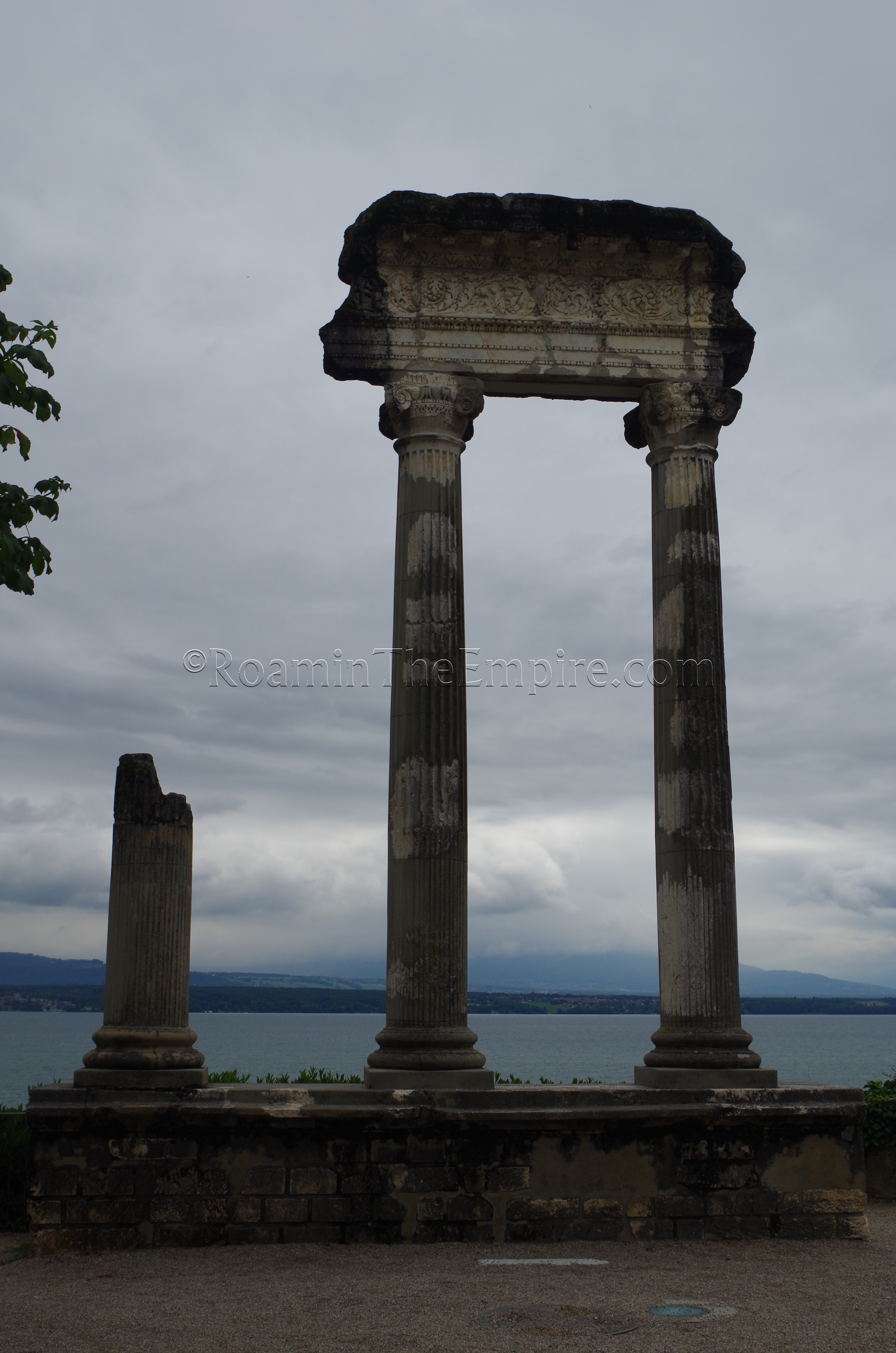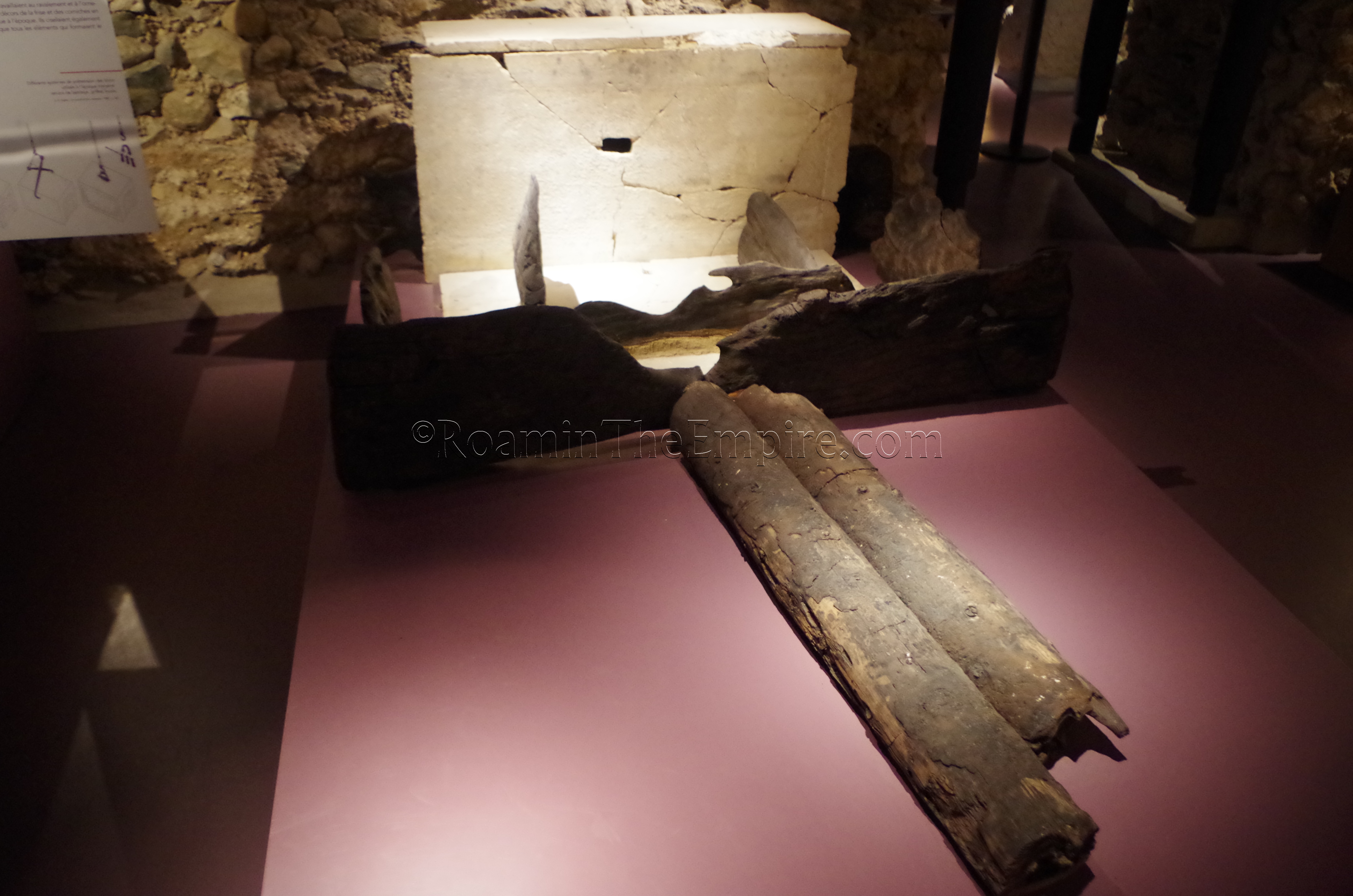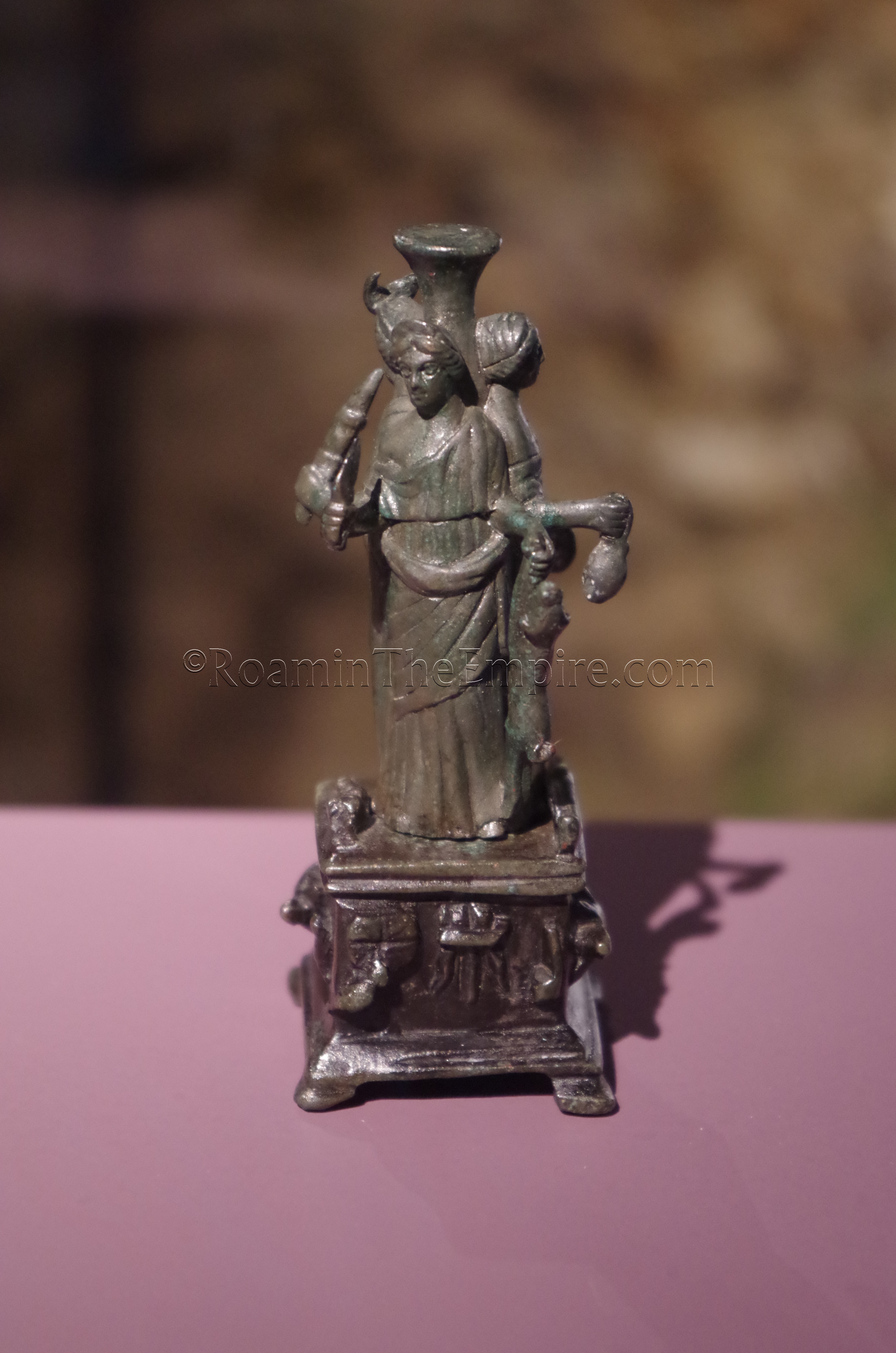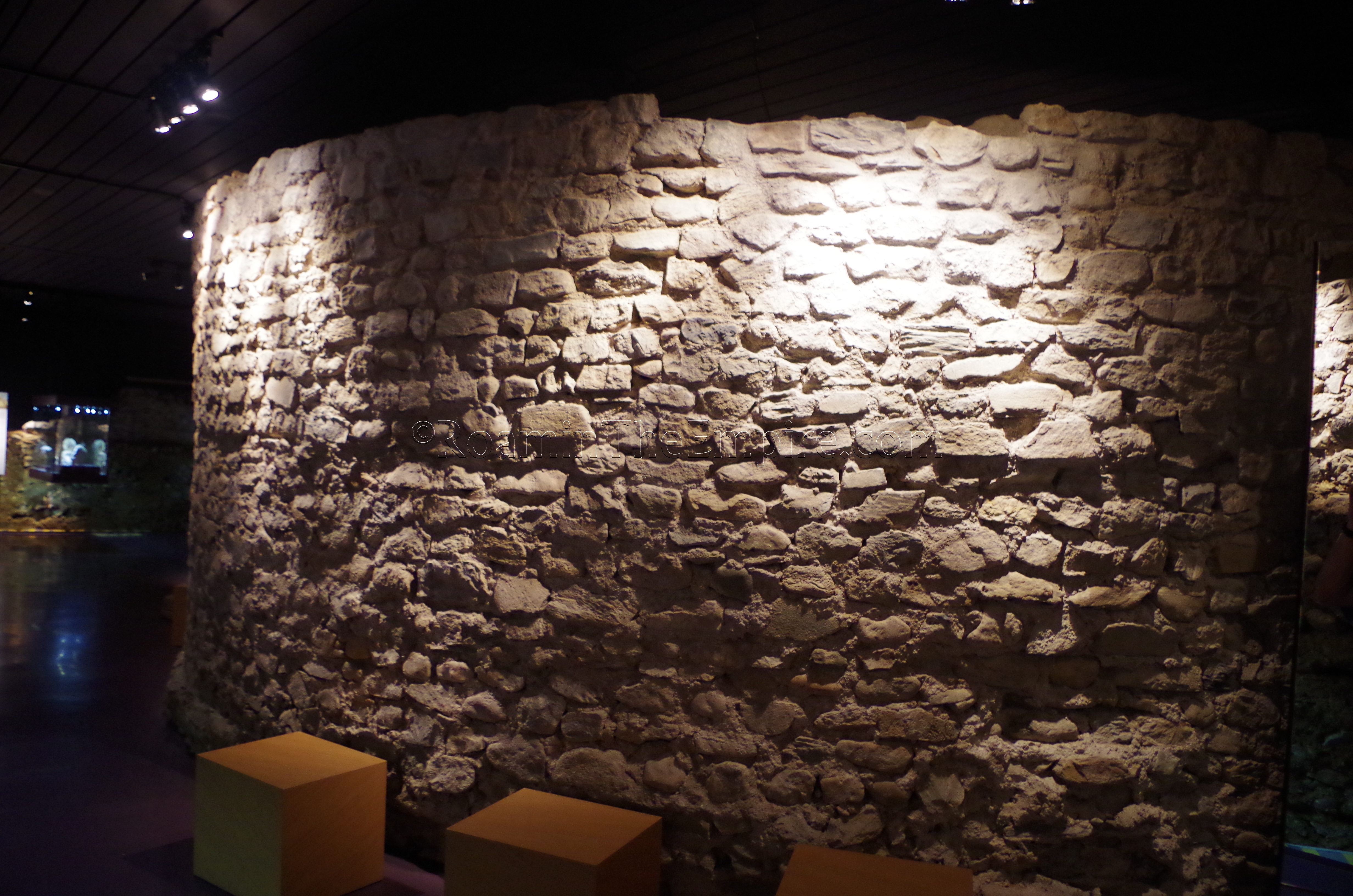
Most Recent Visit: June 2018
Nestled along the shore of Lake Geneva, about 20 kilometers northeast of the city of Geneva is the small town of Nyon. Prior to the arrival of the Romans, the area was under the control of the Helvetii, who apparently had an oppidum at or near the site of the modern town, though no archaeological evidence has been found. In 58 BCE, the Helvetii, under pressure from Germanic tribes, left the area and attempted to migrate west into Gaul. This migration helped to provide the pretext for Julius Caesar’s first major incursions into Gaul, and is the starting point for the Gallic Wars. Caesar pursued the Helvetii and defeated them at the Battle of the Arar and shortly after, the Battle of Bibracte later that year. The latter battle was a resounding defeat for the Helvetii, and resulted in them being forced back to their original homeland. The Helvetii were treated as foederati following the defeat, but, seem to have lost that status after supporting Vercingetorix in 52 BCE. Sometime between 50 and 45 CE, Caesar founded a colony for cavalry veterans at this site, which is reflected in its name; Colonia Julia Equestris. The other commonly referenced name for the site, Noviodunum (not to be confused with the Noviodunum at the site of Jublains, in France), reflects the presence of the original Helvetii oppidum here. The name Noviodunum, however, doesn’t seem to appear until the late empire; the name Civitas Equestrium Noiodunum is used on the Notitia Dignitatum.
Before the Helvetii left in 58 BCE, they apparently burned their towns to the ground to discourage any of the tribe from having second thoughts about the migration and returning home. Whether or not the Helvetii settlement at the site of Colonia Julia Equestris was rebuilt, however, is unclear. The function of the Roman colony at this location, though, is probably a means to control the restive Helvetii, who were forced back onto the land by Caesar and were likely none too happy about the prospect, as reflected by their support of Vercingetorix shortly after being resettled here. Colonia Julia Equestris sits on the western extent of the Helvetii territory, and essentially controlled access between the territory of the Helvetii and the rest of Gaul. The location also probably helped to safeguard the trade network running east from Lugdunum and up through the Rhône river valley.

The proximity to the administrative capital of Lugdunum and location along a major trade route helped Colonia Julia Equestris to enjoy a good deal of prosperity and growth through the end of the 1st century BCE and the early 1st century CE. Colonia Julia Equestris had a port on Lake Geneva (Lacus Lemannus or Lacus Lausonius to the Romans) to supplement the overland trade route through the town. A bronze tablet found over 500 kilometers away in Castra Regina (modern Regensburg, Germany) bears and inscription noting it was crafted by a Luccius Cusseius Ocellio of Colonia Julia Equestris. That early period of prosperity and growth for the colony culminated in a major period of building and renovation during the reign of Tiberius. Additional public buildings were constructed while Nero was emperor.
The settlement seemingly continued to do well through the 1st and 2nd centuries CE, becoming a sort of regional administrative center to the surrounding area. Around 260 CE, the culmination of the Crisis of the Third Century, the declaration of the Gallic Empire, and invasions into the area by the Alemanni brought the growth and prosperity of the colony to a crashing halt. About that time, many of the public edifices seem to have been either destroyed or dismantled. Many of those materials seem to have been used in construction in surrounding areas, particularly at Genava (Geneva), where at least 300 blocks from Colonia Julia Equestris were used in the building of a defensive wall in 300 CE. While habitation did not cease at Colonia Julia Equestris, it is still noted as existing in the 5th century CE, it declined in importance while Genava became the preeminent settlement in the area.
Getting There:
Geneva is the most logical staring point from which to visit Nyon. The city is well-connected via rail from the rest of the country and from France (I visited via a train from Lyon), and there is an international airport near the city. Nyon is just a short 15 minute commuter rail ride from Geneva. Trains leave from Geneva’s main train station at pretty regular intervals, every 10-20 minutes between about 5:00 and 21:00. The price ranges from about 2.30 Swiss Francs to 9 Swiss Francs (CHF) each way depending on the departure and whether or not a ticket is purchased in advance. Buying from the local transit kiosks on the day of departure seems to be the most expensive way. Schedules and tickets can be found on the Swiss Federal Railways (SBB) site here. Once in Nyon, everything is pretty well central in the small town and the Roman sites are easily within walking distance of Nyon’s train station.
Musée Romain
While the remnants of Colonia Julia Equestris found in Nyon have been plentiful, according to information in the museum which illustrates the town plan and all the points where architecture has been uncovered, much of what remains of the settlement is not visible or remaining. Perhaps the best place to start on a tour of the few remaining vestiges is at the Musée Romain, the archaeological museum for Nyon. It is located at Rue Maupertuis 9. In the summer (from April to October) the museum is open Tuesday through Sunday from 10:00 to 17:00. The rest of the year, it is open Tuesday through Sunday from 14:00 to 17:00. Throughout the year, the museum is closed on Mondays. Admission to the museum is 8 CHF.

The Musée Romain is not especially large, which is probably to be expected, given the archaeological collection housed in the Musée d’Art et d’Histoire a short distance away in Geneva. The collection is composed of mostly smaller objects; ceramics, glass, bone, and smaller bronze objects like statuettes and decorative elements. There are a few fragments of larger sculptures and architectural elements, as well. Some of the more interesting pieces include a few fragments of wall painting from a villa in nearby Commugny, a copy of the stamp of Luccius Cusseius Ocellio found in Regensburg, and tiles with the imprint of an infant and animals. There are also a few preserved wood objects that I thought to be particularly unique. One is a fragment of wood (identified as a part of a barrel) inscribed with the name Publius Receptus. Also on display is a water basin made of oak and limestone, with several elements of wood preserved, including two wooden pipes.
In addition to just the archaeological collection, the remains of a civic basilica constructed during the reign of Nero or Vespasian are visible throughout the museum, serving in some places as the actual wall for the museum. Part of the forum of Colonia Julia Equestris, the basilica was the second building of that type constructed at that location. Originally, a basilica was built on the site during the reign of Augustus, but it was demolished as part of the large building program initiated by Tiberius. The completion of the second basilica in the latter half of the 2nd century CE effectively capped the building program and marked the end of those major reconstructions in the town. At a certain cycle, every 10 or 15 minutes, the lights in the museum dim and only the basilica walls are fully lighted, to draw attention to the remains.

The admission to the museum is a bit pricey, objectively speaking, though seems pretty on-par with the overall high price of things in Switzerland. A fair portion of the space, perhaps about 25% of the total museum, was also dedicated to temporary exhibitions, one of which was unfortunately in the process of being changed out when I visited. There is much in the way of information displayed in a language other than French, though there are small booklets with some general information available at the ticket counter. It took me about 30 minutes to get through the museum, and with a temporary exhibition, perhaps about another 10 minutes would be needed depending on what it was. Despite the price, it was a nice museum with a good mix of objects displayed in a meaningful way. The use of the basilica walls and foundations as an integral part of the museum was also a unique and interesting addition to the experience.
The Musée Romain is built into the side of a hill, and the area above the museum is a public square. Built into the square are blocks and pavement changes illustrating the footprint of the basilica. A building adjacent to the square also sports a mural with an architectural representation of the interior of the basilica that would have occupied this spot.

Les Colonnes Romaines and Tour César
A few minute walk to the southwest of the museum, located in the Place des Marronniers, are Les Colonnes Romaines; the Roman Columns. In this park overlooking Lake Geneva are the reconstructed remains of two complete columns and one incomplete column, as well as part of the architrave of a portico that was part of the sacred area of the forum. The columns are not in-situ, but were found nearby at Rue Delafléchère, to the north. The portico was part of the Tiberian building program, and as such dates to the first half of the 1st century CE. The Sainte-Marie Gate adjacent to the park on the northwest, spanning the road that runs on the west side of the park, incorporates some fragments of Roman architectural elements as well.

Heading back to the east at Rue de Rive 53 is the Tour César. Near the top of the southeastern façade of the tower is a fragment of the upper part of a statue of Attis incorporated into the original tower. The modern facing of the building exhibits the statue in a recessed niche. The Attis statue is not visible from Rue de Rive, but rather is best viewed from the next street to the east, Quai Louis-Bonnard, which runs along Lake Geneva. A copy of the Attis statue is on display in the Musée Romain.

Amphitheater
Northeast of the old town, located along Rue de la Porcelaine are the remnants of town’s amphitheater, which seems to have been constructed in the beginning of the 2nd century CE. Measuring 50 by 36 meters, the amphitheater probably held about 5,000 spectators. The amphitheater, discovered in 1996, is not open for visit and is largely covered pending restoration. As such, there isn’t a whole lot to see, other than a covering in the shape of the amphitheater. That can, though, be seen from the street, as there is a low fence surrounding most of the site. There is also an informational board, in French, posted at the amphitheater with facts regarding both the amphitheater and the Roman town as a whole.
The final remnant of the Roman remains of Colonia Julia Equestris visible in Nyons is something that I was not able to find while I was there, but, through some additional research I’ve been able to find after that fact. In the center of the old town, at Place du Marché in the southeast corner of the square, incorporated in a column of the arcade, is an architectural block with a cow skull relief.
Nyon is a fairly quick trip from Geneva, and while the remains are not extensive or overly impressive, they are more than one would find in Geneva, which was a very minor settlement through most of the Roman period. With an advance train ticket, the trip out to Nyon can be pretty reasonable as well, though last minute tickets tend to push the price up pretty high. With an extra afternoon while in Geneva, though, it’s a great little side trip.
Sources:
Museum informational booklet.
Postan, M. M., and E. Miller. Cambridge Economic History of Europe: Vol. 2: Trade and Industry in the Middle Ages. Cambridge University Press, 1987.
Stillwell, Richard, William L. MacDonald, and Marian Holland. McAllister. The Princeton Encyclopedia of Classical Sites. Princeton, NJ: Princeton U Press, 1976.


